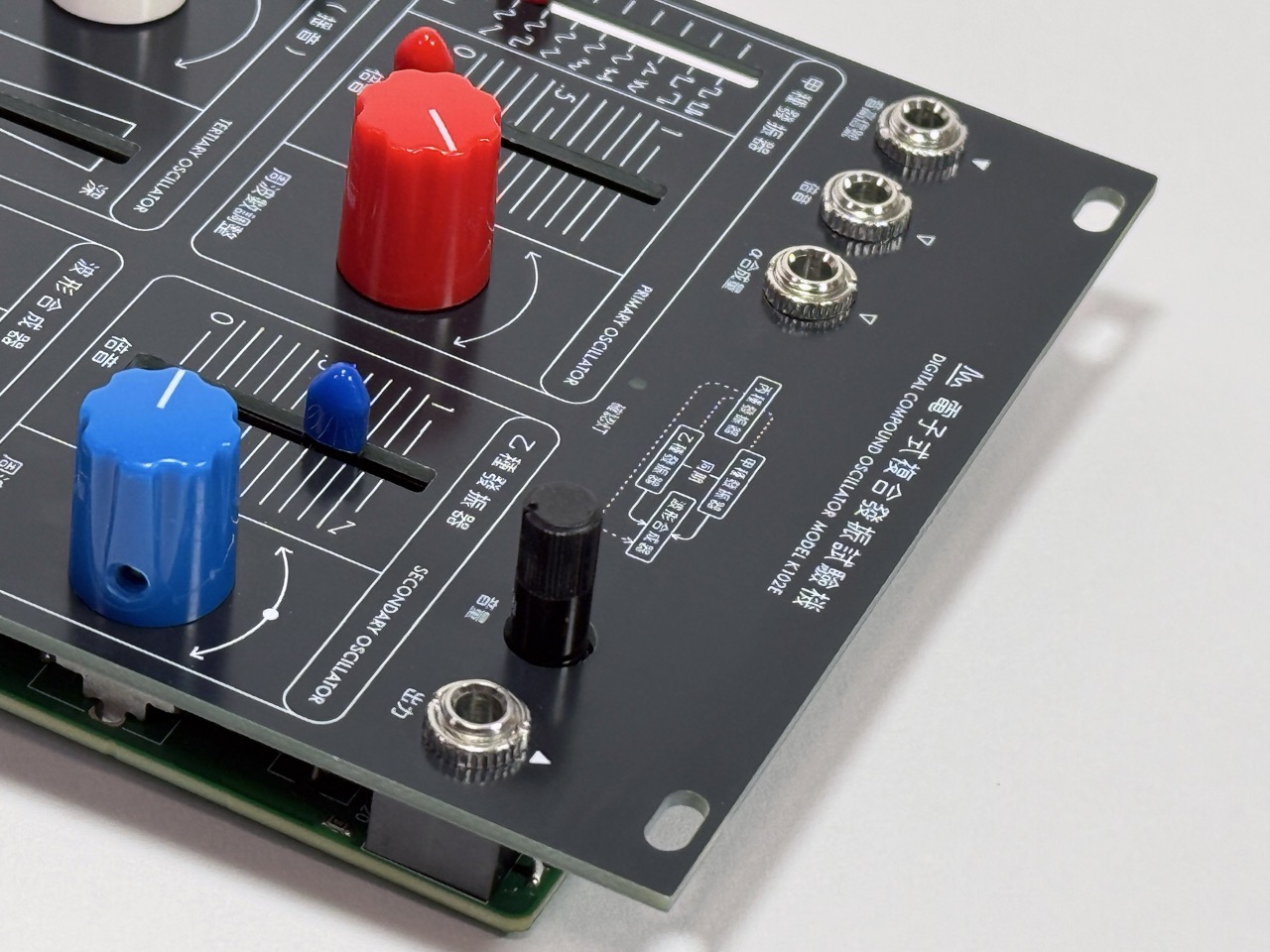
日本語版:
Introduction
Design is the most essential element in conveying the essence of a synthesizer. I created the K102E Digital Compound Oscillator, a Eurorack format module featuring a compound oscillator.
This compound oscillator with three DCOs is currently sold out in hardware form, but you can experience the software simulation through VCV Rack.
The most distinctive feature of this module is its design. I adopted classical Japanese typography that feels as if it time-slipped from 1943.
This design may evoke negative impressions for some, similar to how Germans might view Fraktur script, but for many, it appears fresh and somewhat like an out-of-place artifact.
Here, I document the journey to this unique design, along with the evolution of the concept.
The Beginning
Synthesizer panels are typically (almost always) labeled in English. People who play synthesizers are often specialists who understand what an "oscillator" is. However, this can be difficult for children or people outside English-speaking regions.
There are also universal designs that use symbols to make them accessible even to children. Dato DUO is the most excellent example in this field, which I deeply admire. Universal design is embodied through pictograms and Susan Kare's work, and has become common through recent web icons and emojis. This area is highly creative, and I plan to work on it eventually!
What about non-English labels?
For example, some synthesizers from the former Soviet Union, like the famous Polivoks, have panels labeled in Russian (Cyrillic).
There are also those with Chinese labels, like Meng Qi.
In Japan, electronic versions of traditional instruments such as koto conductors (like SUIKO ST-10) and electronic taishogoto (like Suzuki TES-371) feature Japanese labels. These are based on traditional Japanese instruments, and their primary users (mostly elderly) are unfamiliar with English. However, despite having notable synthesizer manufacturers in Japan, there are hardly any synthesizers with Japanese labels beyond these examples. This is unfortunate.
From here, I began to consider synthesizer design in "Japanese."
2020
I started creating synthesizers in 2020. With vaporwave trending at the time, I expected synthesizers featuring Japanese text to emerge. However, it quickly became apparent that this expectation was mistaken, so I began sketching.
Initially, I considered adopting Japanese for the "Shinobi" project, but realized that simply increasing katakana had no particular significance. Modern katakana notation merely phonetically transcribes English words, lacking design uniqueness.

My first project was designing a desktop synthesizer called "Shinobi," featuring a touch keyboard similar to the EDP Wasp. At this point, I was still critical of Eurorack.
Simultaneously, I had a concept for an "Island Synth"—a uniquely Japanese synthesizer that was neither West Coast nor East Coast in design philosophy. For example, using phase distortion like the CZ-101 for oscillators and traveler-style filters like KORG's.
However, at this stage, I was limited to katakana notation, which ended up seeming like mere translations. I concluded that choosing English notation would be better than this half-hearted approach. Additionally, this project would require enormous effort to realize, so it was eventually discontinued.
2022
After "Shinobi," some time passed before new concepts emerged in 2022.
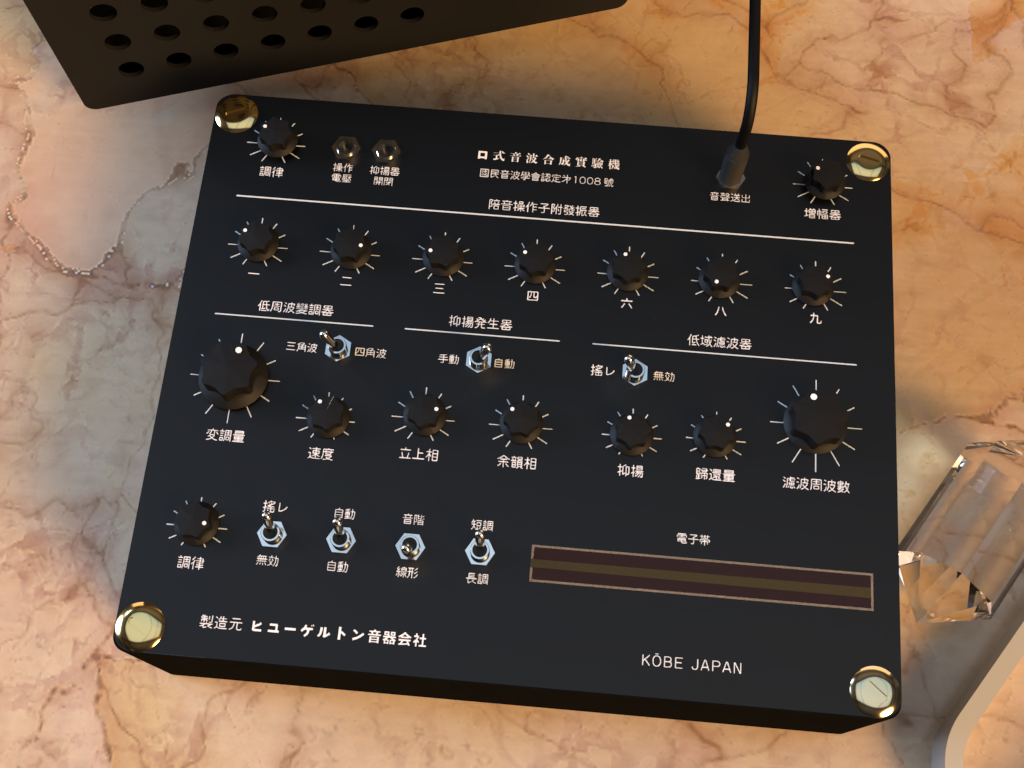
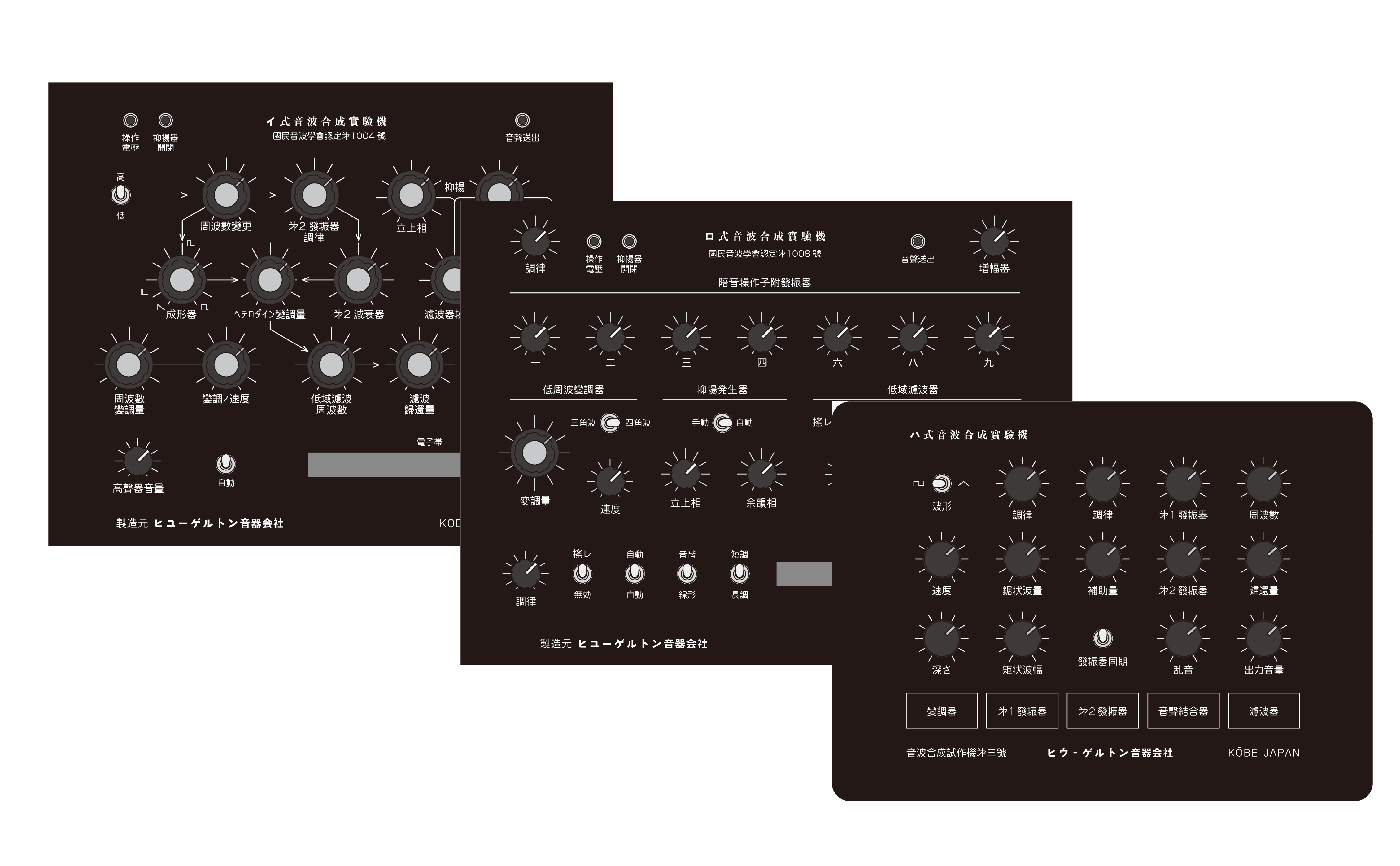
This concept was inspired by an army transmitter I happened to find in an online auction. The design of communication devices and radios (or "ラヂオ" in old Japanese) appeared old-fashioned at first glance but felt fresh to me.
While exploring word replacements in Japanese, I discovered interesting expressions in Chinese specialized terminology and pre-war Japanese "enemy language elimination" era terminology that went beyond simple katakana transcription. I thought using these intentionally could create a distinctive atmosphere different from contemporary sensibilities.
Additionally, I conceived that such retro Japanese notation could express a sense of out-of-place artifacts or parallel worlds—an imaginary world of "what if Japan had developed its own electronic music culture." By using terms like "音波發生裝置" (sound wave generation device) instead of "発振器" (oscillator) in modern context, I believed I could construct a design language that transcended mere nostalgia and spanned across time and space.
I particularly focused on the design language of Japanese military and civilian equipment from the 1930s to 1940s. Equipment from that era reflected a unique aesthetic while emphasizing functionality. Characteristics included combined kanji and katakana notation, bold and powerful typography, and orderly layouts. These elements possessed an aesthetic different from modern minimalism while maintaining excellent operability.
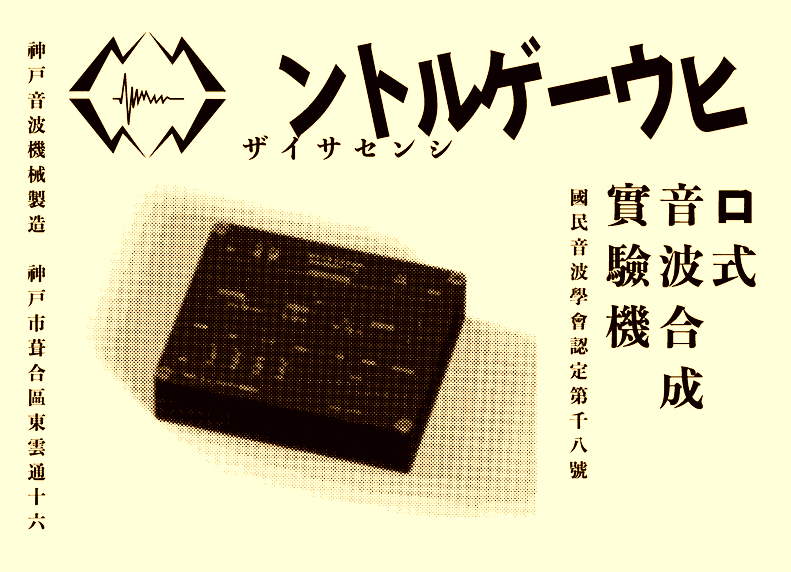
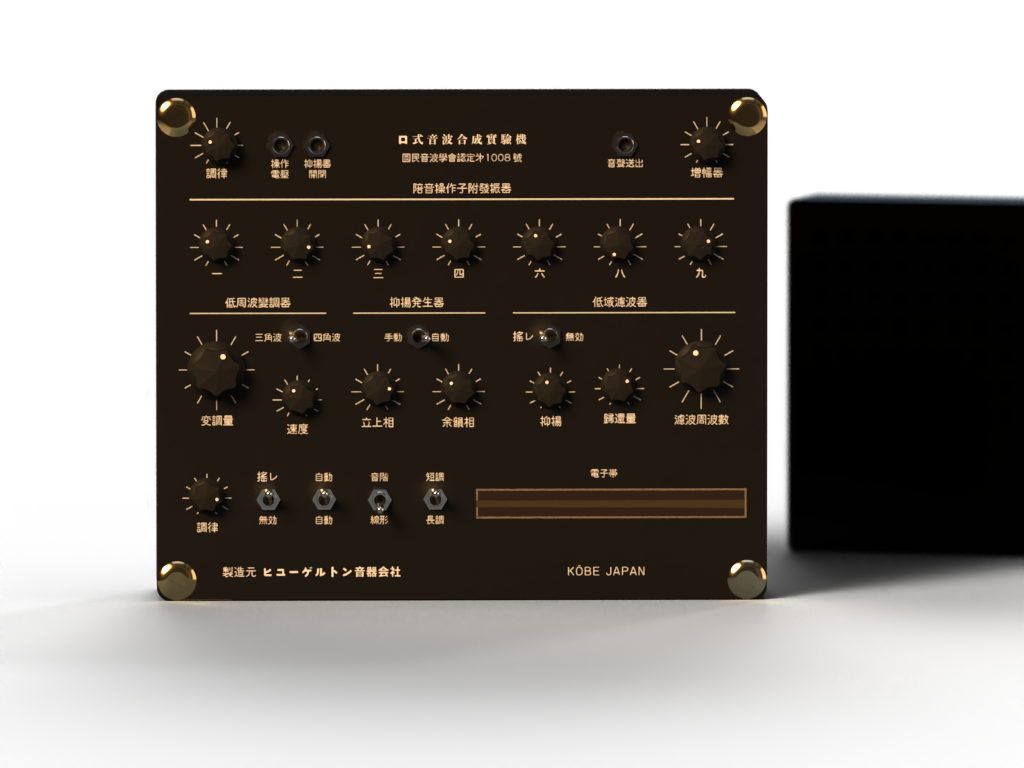
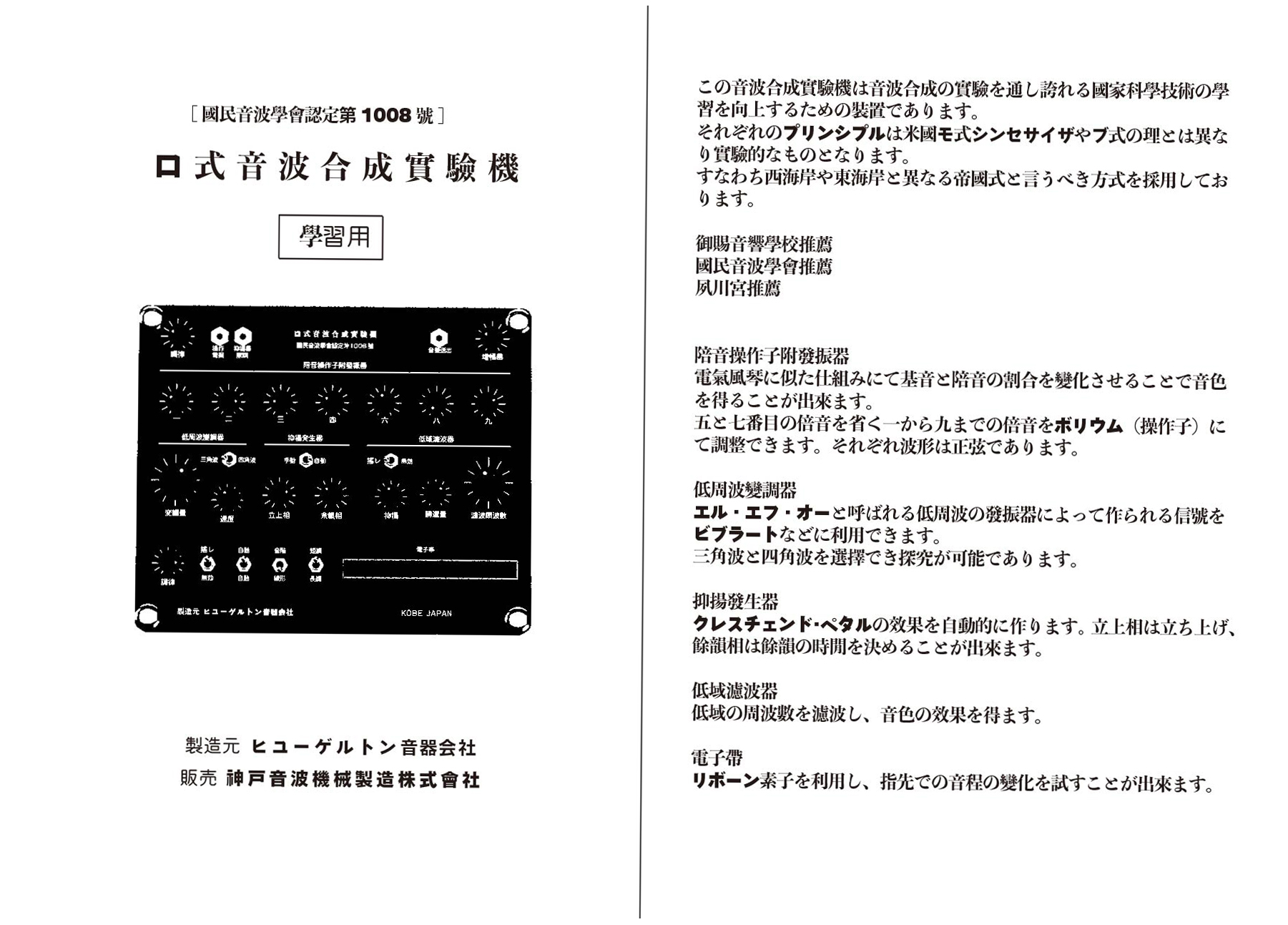
I created 3D models and renderings, but this project also didn't reach development. However, during this process, I decided to pursue a design with a powerful image using old-style characters.
2023
The "K" in K102E stands for Kristall (crystal). I chose this name because the German word "Kristall" also evokes Kraftwerk's "Kristallo" and conjures a scientific image.
For the "Sound Wave Synthesis Experimental Machine" series, I aimed for a military equipment-like appearance, but concerned this might create too severe an impression, I pursued a design closer to measuring instruments.
I also reconsidered the touch keyboard idea and resumed desktop synthesizer development.
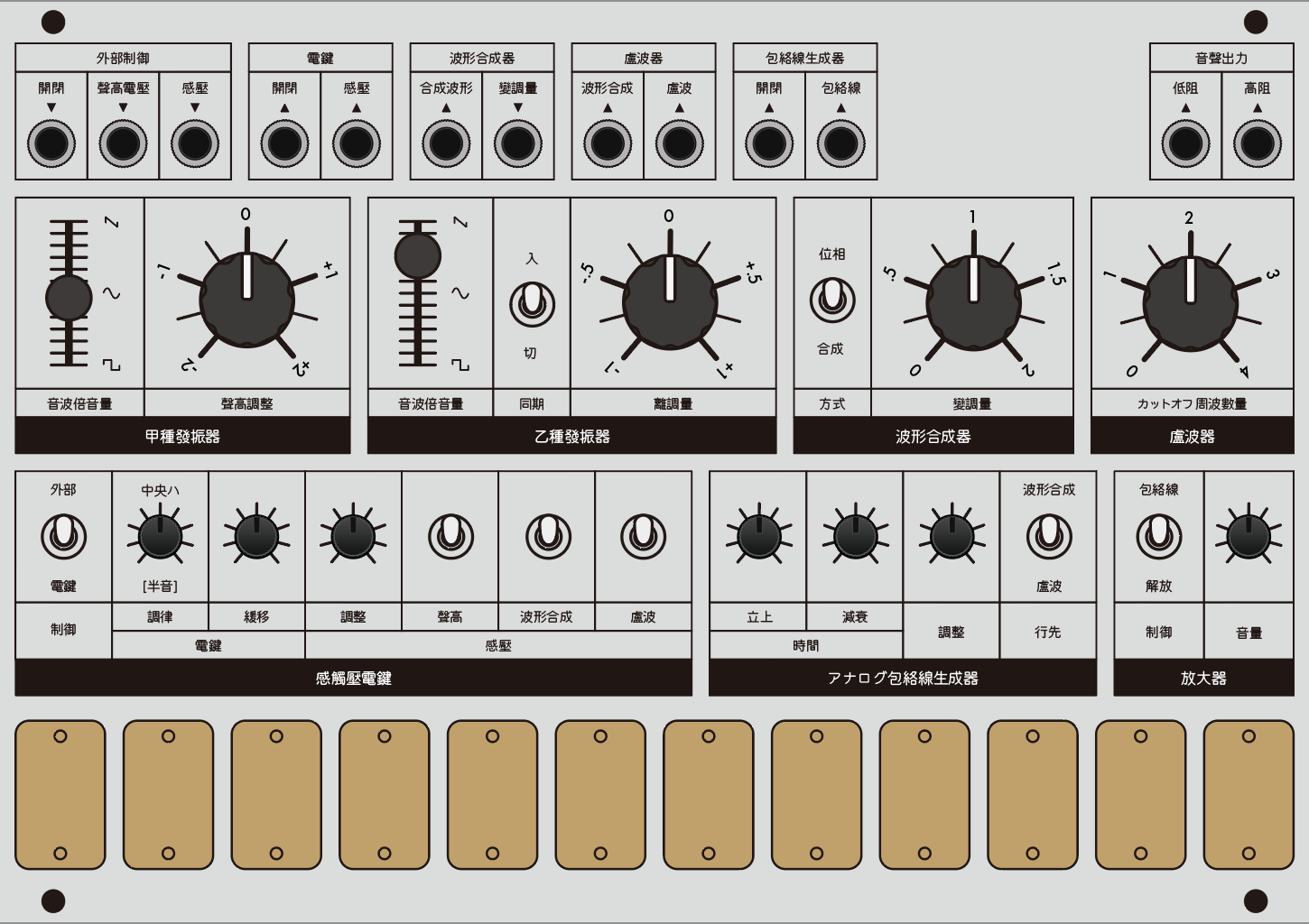
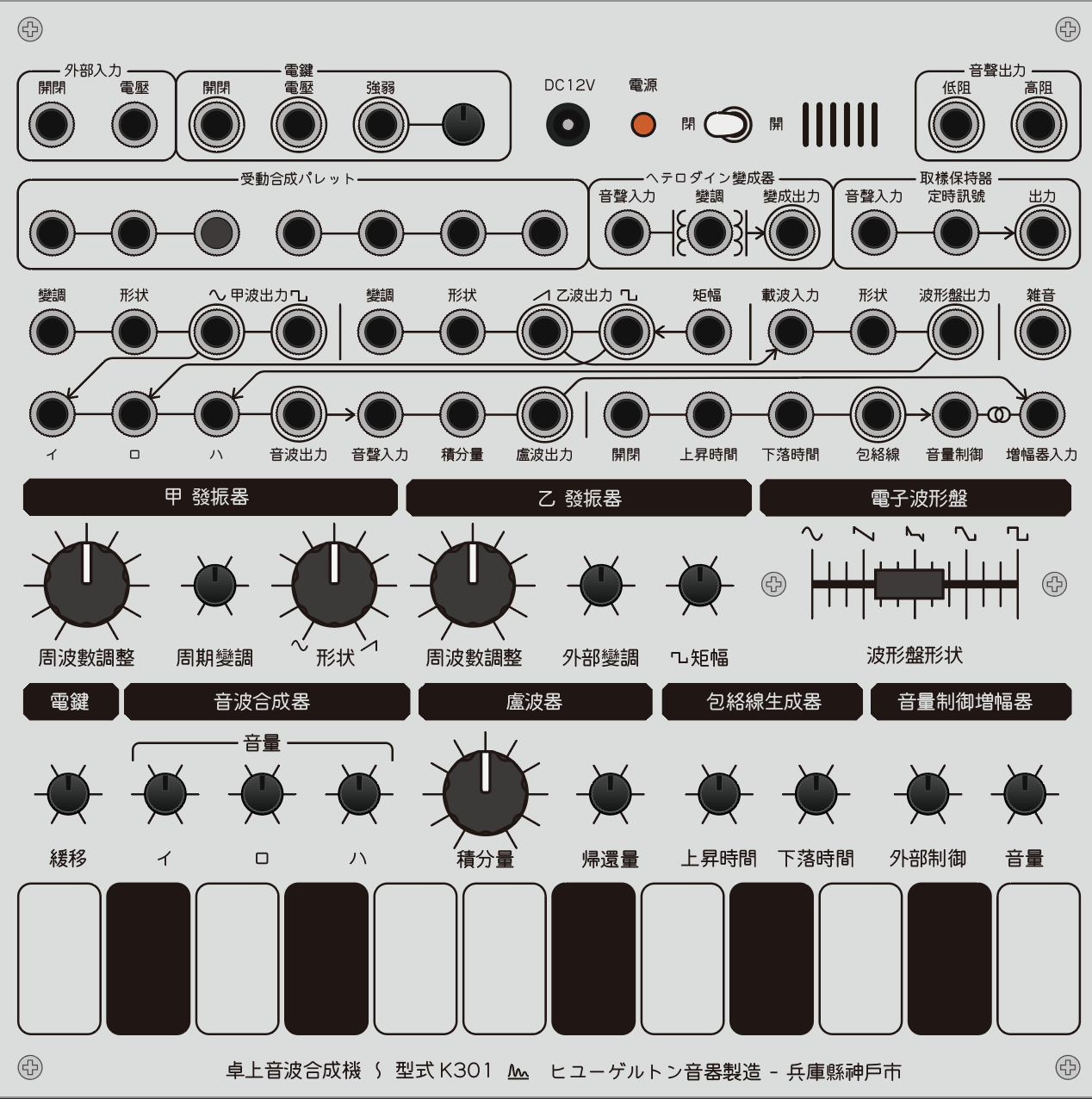
During this period, I actually began developing some components, primarily the touch keyboard.
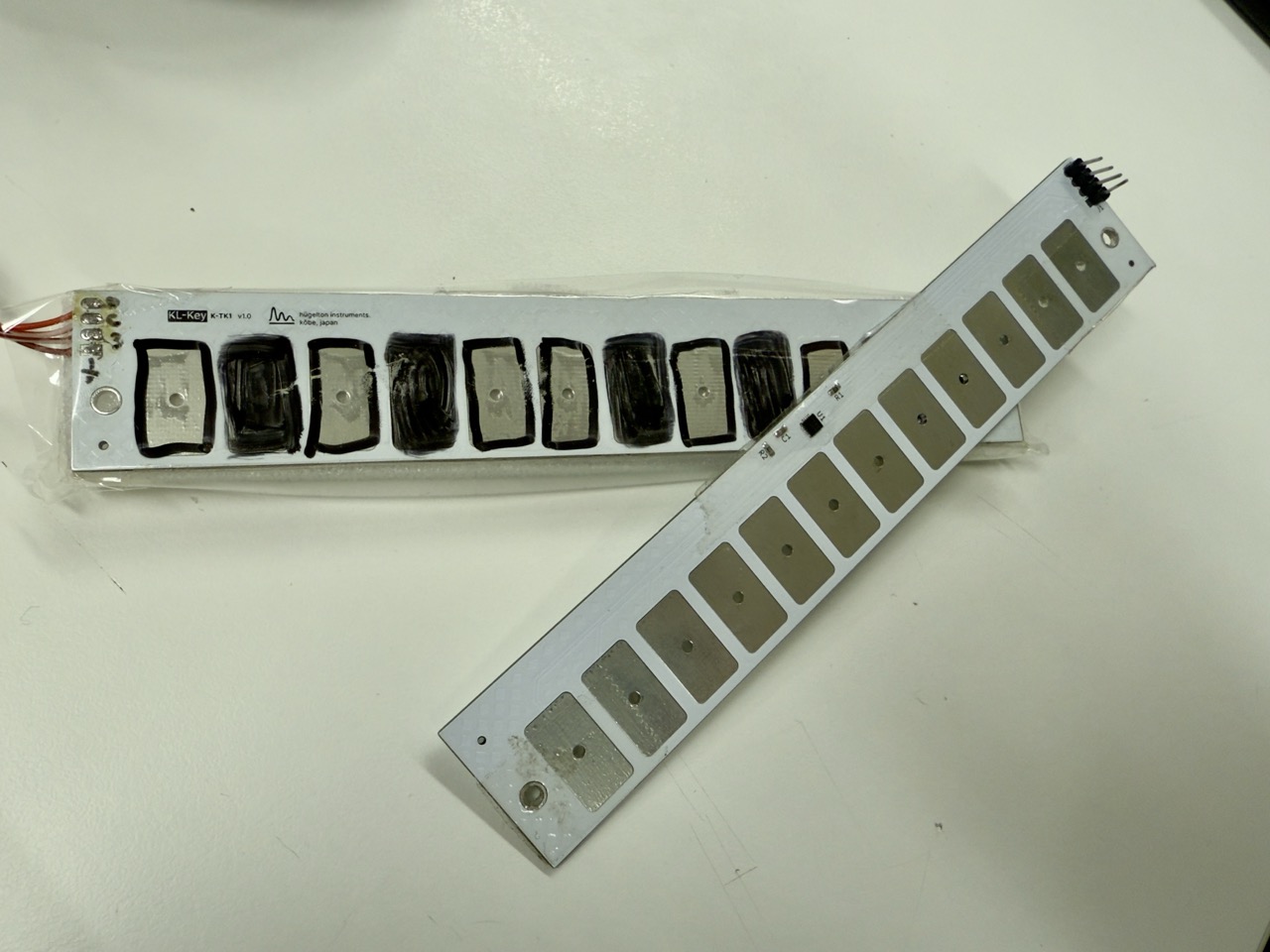
2024
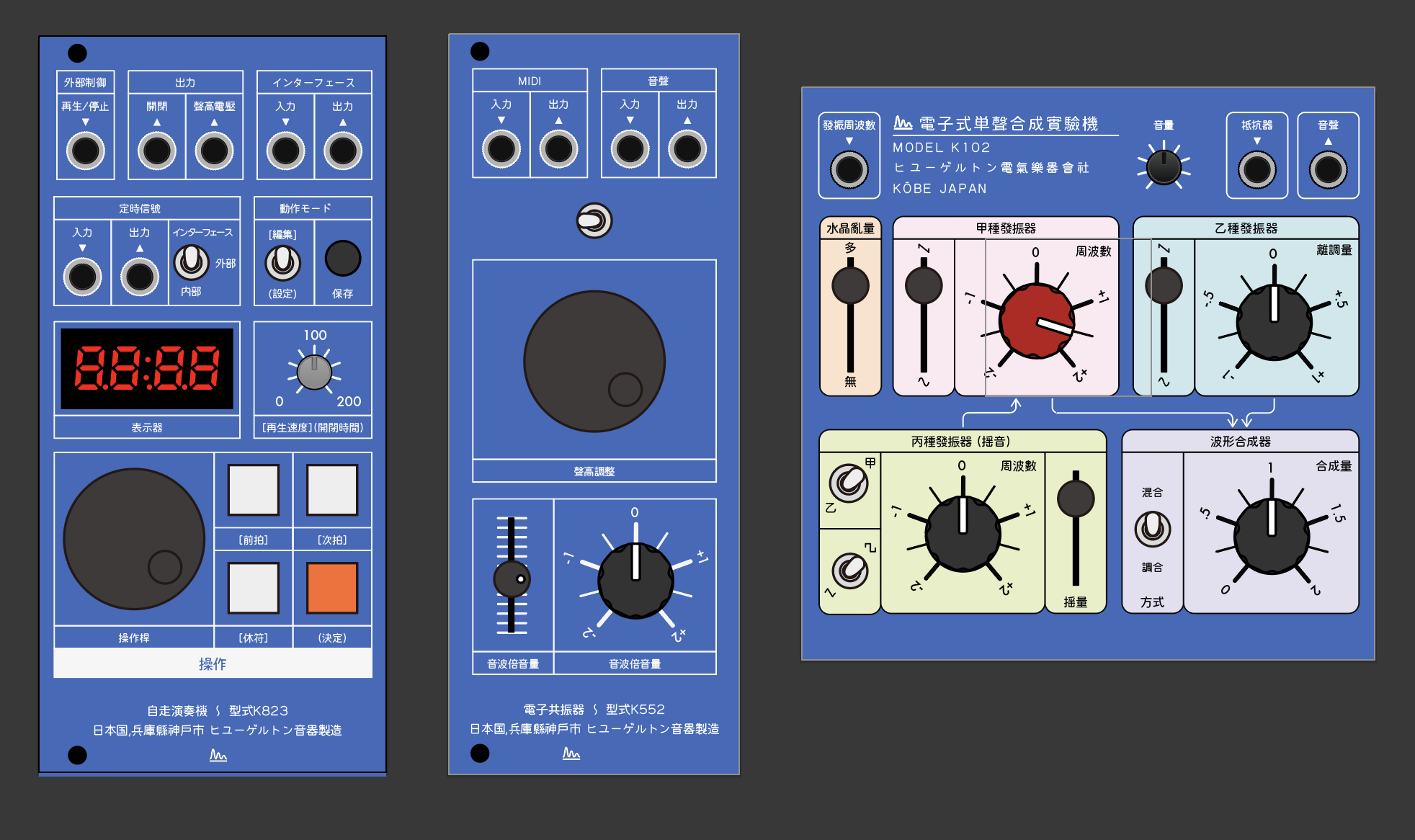
More time passed, and in 2024, I started with Eurorack modules. Continuing the measuring instrument approach, I began with a blue design inspired by the blue panel of the EML ElectroComp 101.
These were intended to be blue-painted on metal plates, and I even considered a relic finish with artificial aging.
However, discovering that these developments would require substantial effort, I decided to start with a relatively simple product.
That was the K102 oscillator.
Initially planned as a USB-powered drone machine, the 100×100mm panel size was chosen to optimize PCB manufacturing costs.
This became the first product I developed and realized.
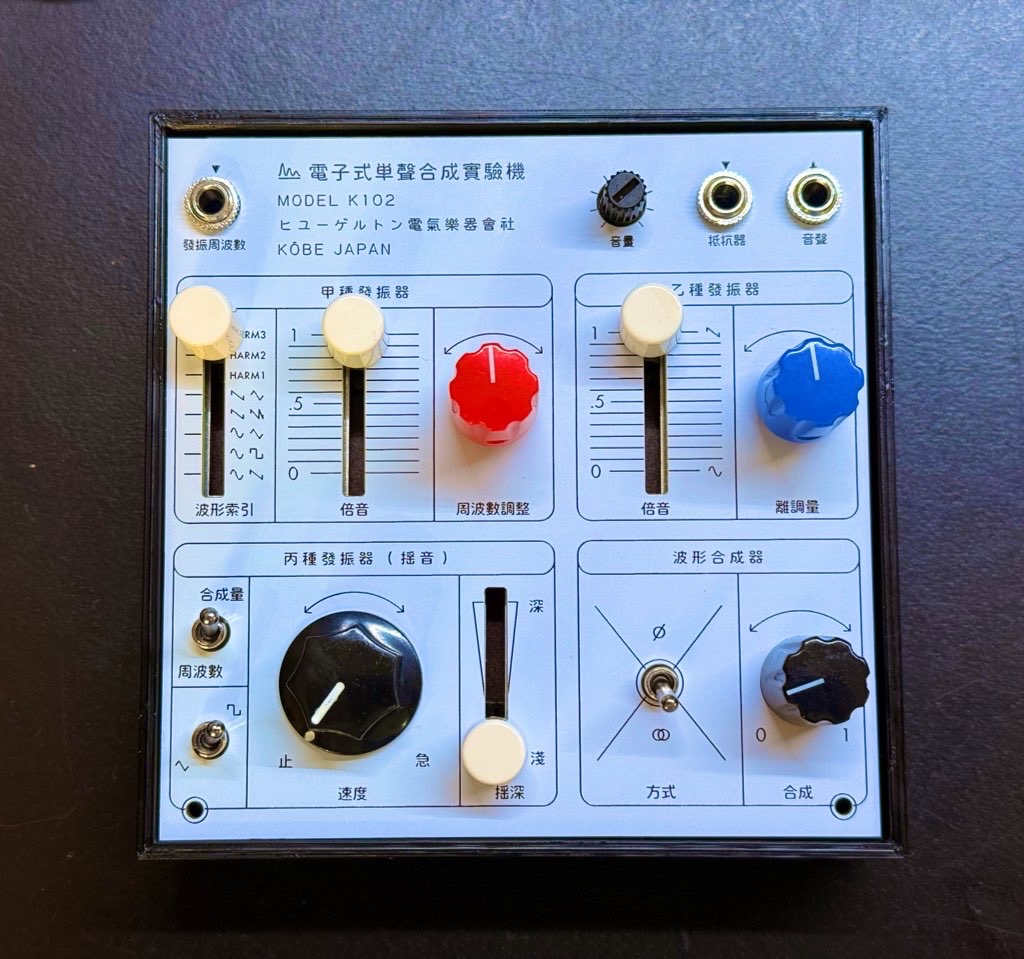
I felt a great sense of accomplishment when it was completed.
After receiving various responses on Twitter/X, particularly requests for a Eurorack version, I decided to return to the Eurorack format.
2025
K102 first appeared as "K102V" in VCV Rack. Shortly after, the physical hardware "K102E" was completed.

Due to demand for black panels, I also produced a black version. Interestingly, only the black panels sold out in the initial sales.
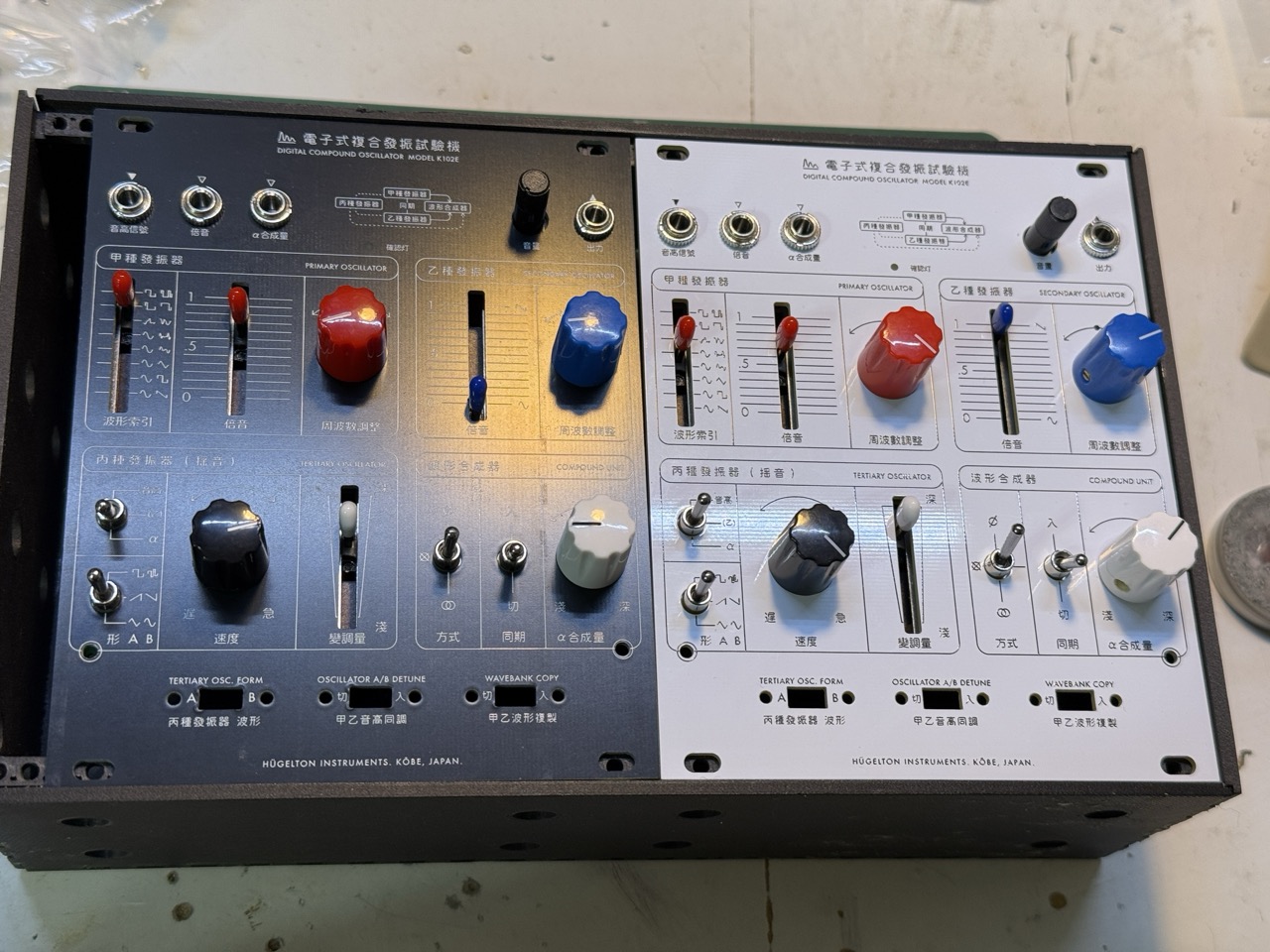
This time, I unified all elements, including the instruction manual, with this design aesthetic.
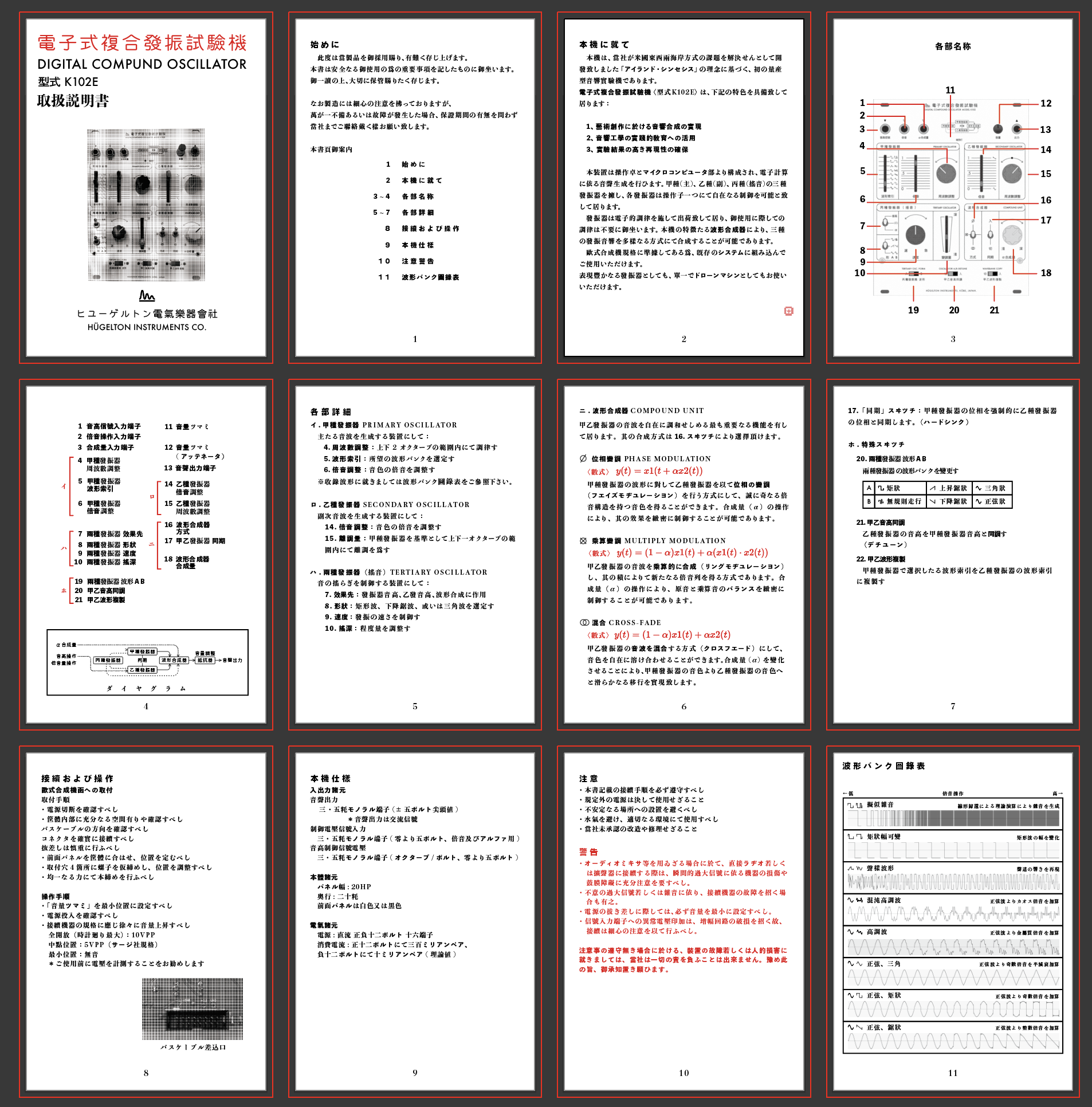
I aimed to faithfully recreate the atmosphere of the era, referencing pre-war household appliance manuals and letterpress reprints of works by Tarupho Inagaki, whom I admire, such as "第三半球物語" and "一千一秒物語."
Design Philosophy Established
Through the K102E design process, my concept evolved from simple "Japanese notation" to an "alternative historical design language." Expressing modern technology through past aesthetics is a creative challenge beyond mere nostalgia.
This design approach includes the following elements:
Reinterpreting historical context: Not merely imitating old designs, but designing from the perspective of "what if modern technology had developed in a different historical context"
Linguistic reconstruction: Reconstructing modern electronic music terminology based on pre-war Japanese language structures and word formation (e.g., oscillator → "發振器", primary → "甲種")
Visual consistency: Reflecting period aesthetics in typography, symbols, and layouts while ensuring modern operability
Cultural identity: Opening new expressive possibilities by introducing a uniquely Japanese visual language into global synthesizer culture
These elements aim not simply to "make things look old" but to create a new design language that transcends the binary oppositions of past and present, East and West, analog and digital.
Resource
Fonts Used
Tools Used
Future Prospects
Adopting such retrospective design for the panel is just one expressive approach. However, I am planning several series sharing this design philosophy and hope you will look forward to future developments.
This exploration of "alternative historical synthesizer design" is an experimental attempt at the intersection of technology and design, language and music, history and future. K102E is just the first step, and I intend to continue exploring new possibilities.
LK